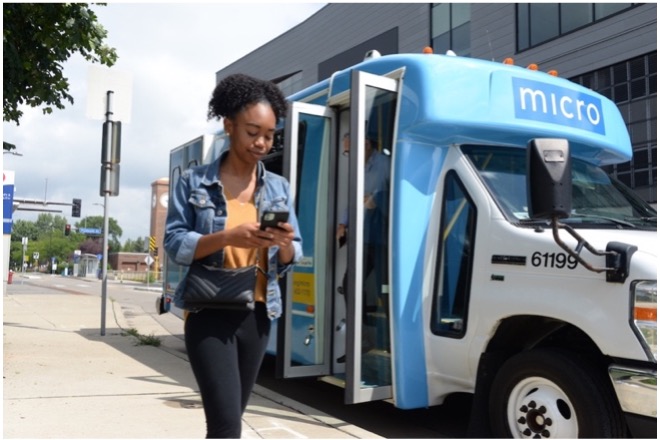Metro Transit launched Metro Transit micro, its first on-demand ride service, on September 22, 2022. The service covers a 2.5-square-mile area that includes parts of the Near North, Bryn Mawr and Harrison neighborhoods in north Minneapolis and the edge of downtown Minneapolis.
Metro Transit micro works much like other ride-sharing services. Community members in the area can request a ride directly from their smartphone app or phone, track the vehicle’s location and view an estimated pick-up time. Riding Metro Transit micro costs the same as regular bus fare and transfers are free.

Metro Transit micro provides on-demand service to north Minneapolis (Photo: Metro Transit)
The Metro Transit micro fleet differs from the conventional ride-sharing services, such as Uber and Lyft, because each of the five vehicles can accommodate 10 to 12 passengers. Their smaller-than-a-bus size, though, makes it easier for them to access more locations directly than fixed-route transit. The ADA-accessible vehicles include wheelchair lifts, bike racks and priority seating areas for those with mobility aids.
With this new service, Metro Transit wants to improve access to high-frequency routes and increase mobility choices in historically underserved communities. Based on those goals, Metro Transit selected the area for a pilot of a new and convenient transportation option for residents. During the pandemic, the Metro Transit system experienced an overall ridership decline, a trend also consistent nationwide. This area of north Minneapolis, though, had a different story. The METRO C line retained 60% of its ridership — one of the highest in the system.
The pilot will run for a minimum of one year. Passengers can take Metro Transit micro anywhere within the service zone. Metro Transit expects the project to:
- Expand mobility choices for residents and workers within the service zone.
- Increase access to high-frequency METRO C Line service between Brooklyn Center and downtown Minneapolis.
- Demonstrate an innovative service model in an area with a high propensity for transit.
- Make a transit investment in low-income and historically underserved communities.
- Add a new service to a transit corridor where ridership remained resilient during the pandemic.

